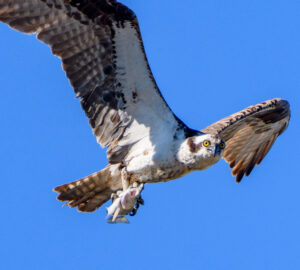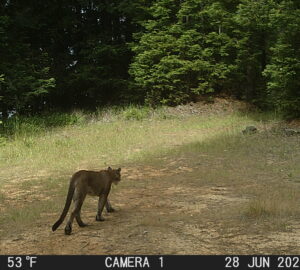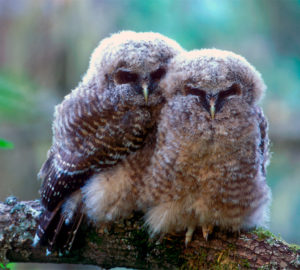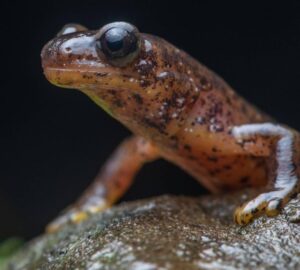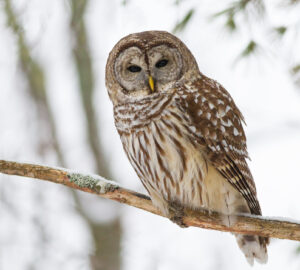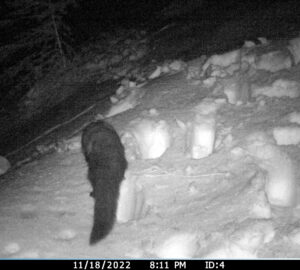Humboldt marten listed as Threatened by U.S. Fish & Wildlife Service
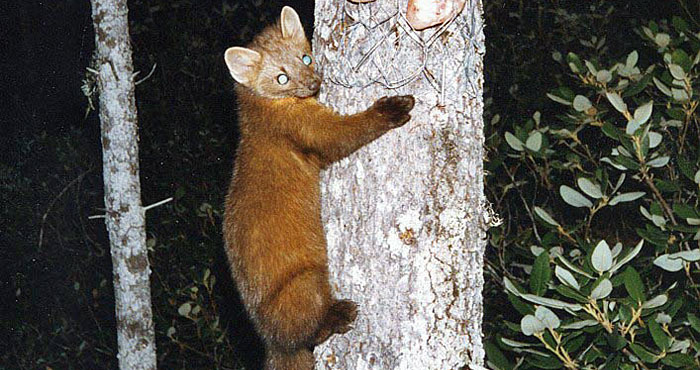
Following a lengthy review, the U.S. Fish & Wildlife Service in late August determined that the coastal distinct population segment of the Pacific marten, also known as the coastal marten or Humboldt marten, warranted listing as a threatened species under the Endangered Species Act.
This secretive, cat-sized mammal in the weasel family lives in coastal Oregon and northern coastal California. It requires mature, structurally complex forest stands with a dense understory, and does particularly well in the old-growth redwoods of the northern California coast. Catastrophic wildfire and historic timber harvest activities threaten habitat of this type in the species’ range.
Historically, the coastal marten lived throughout the coastal forests of northwestern California and Oregon. These mammals have lost over 90 percent of their historical range and currently exist in four small and isolated populations.
The decision comes 10 years after the Environmental Protection Information Center (EPIC) and the Center for Biological Diversity petitioned to list the Humboldt marten as a protected species under the Endangered Species Act. The Humboldt marten now joins the Marbled Murrelet, Northern Spotted Owl, and others as protected species of the redwoods.
The Service evaluated the threats to coastal marten populations including impacts from habitat loss, catastrophic wildfire, changing climate, vegetation management, exposure to toxins, predation, trapping, vehicle mortality and potential effects associated with small and isolated populations. After evaluating the latest scientific and commercial data, the Service concluded that the impact of these threats warrants listing the population as threatened.
“The Service worked closely with federal, state and local partners to help determine the best available science regarding this decision,” said Paul Souza, regional director for the Service’s California-Great Basin Region. “We are honored to work with such a robust and dedicated group of stakeholders to learn more about the species and find creative ways to conserve and recover the coastal marten, while reducing the potential regulatory burden on landowners.”
The Service and other federal, state and private partners are actively working to implement priority conservation actions from the recently completed conservation strategy in an effort to recover the coastal marten. High priority conservation actions include using assisted dispersal to establish new marten populations, protecting important movement corridors and other high value habitat, and conducting research and monitoring to enhance conservation efforts.
The Service is working with California State Parks, Green Diamond Resource Company and the Yurok tribe to develop three individual Memorandum of Understanding agreements tailored to each organization’s unique land management practices. The agreements provide commitments to conservation of existing marten habitat, research and monitoring, restoration of additional habitat and an emphasis on adaptive management to allow flexibility as we learn more about marten habitat and ecology.
“We are committed to the implementation of proactive and coordinated conservation actions, working with the Service and other partners, with the goal to establish self-sustaining, interacting populations of coastal marten throughout their historic range,” said Amber Transou, natural resources program manager, California State Parks North Coast Redwoods District. “Our contributions, primarily through habitat protection, restoration and maintenance are consistent with the California State Park mission to help to preserve the states extraordinary biodiversity and protect its most valued resources.”


